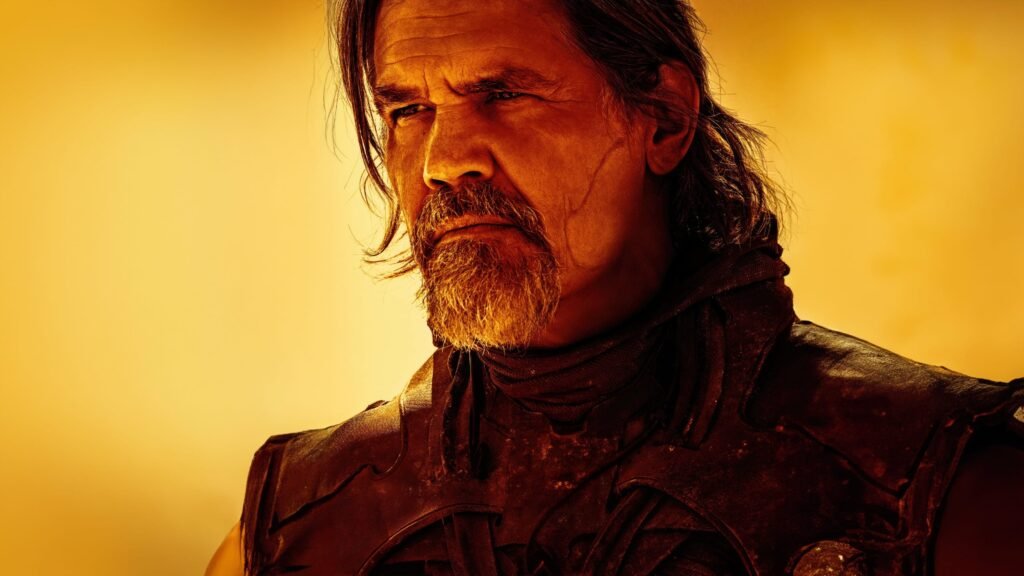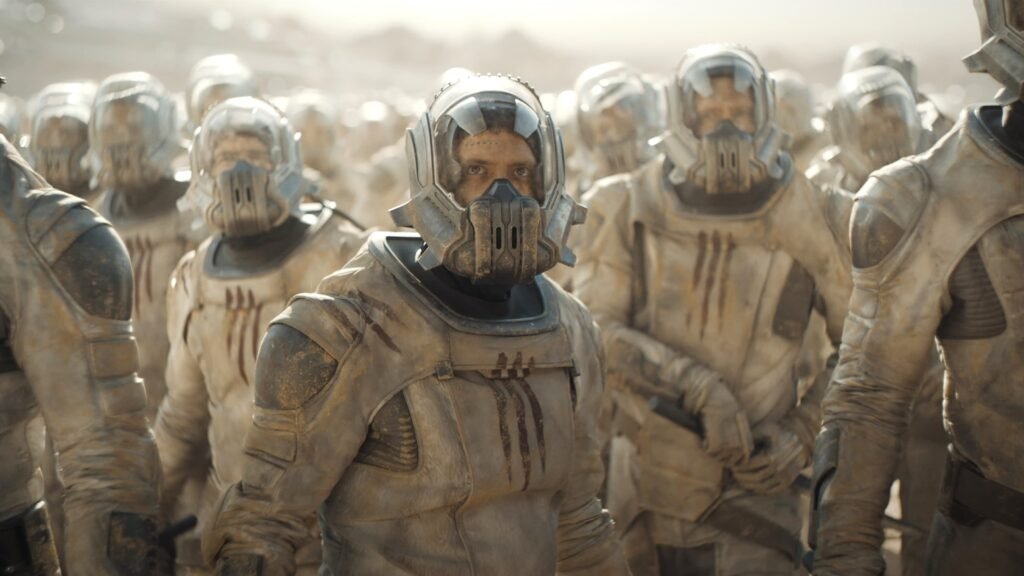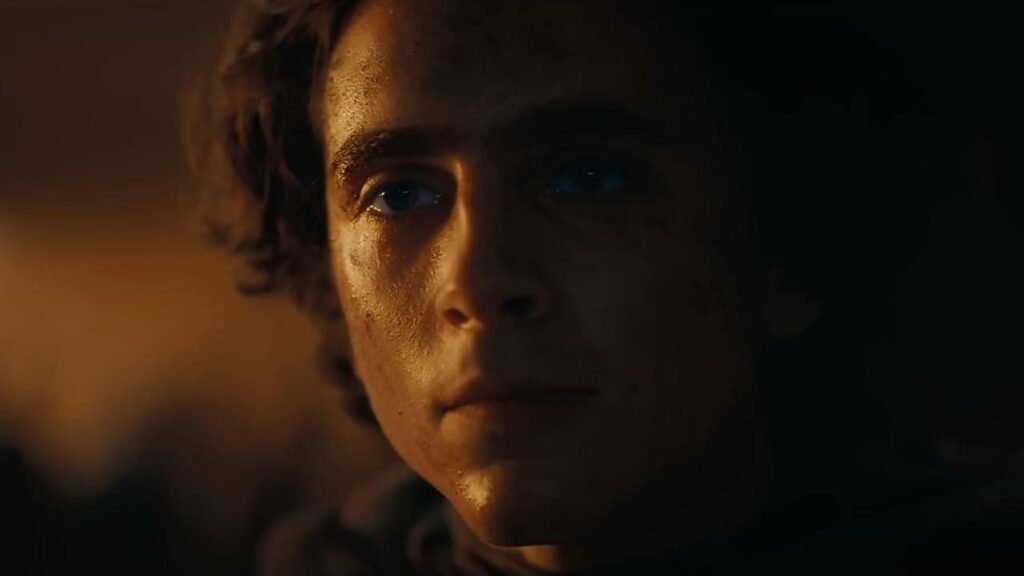The Stellar Ensemble: A Force of Nature.
The cast of Dune: Part Two is a powerhouse of talent that elevates the already epic narrative to new heights. Director Denis Villeneuve has assembled a group of actors who not only embody their characters but also bring depth and nuance to the complex world of Arrakis. This ensemble cast serves as a conduit for the intricate plotlines and themes of Frank Herbert’s beloved science fiction saga.
Timothée Chalamet: The Heart of the Storm.
At the center of the story is Timothée Chalamet, reprising his role as Paul Atreides. Chalamet’s performance is a study in controlled intensity, portraying Paul’s transformation from a young duke-in-waiting to the messianic figure known as Muad’Dib. His ability to convey both vulnerability and growing power adds layers to Paul’s journey, making the character’s internal struggle palpable to the audience.
Chalamet’s nuanced portrayal allows viewers to experience Paul’s moral dilemmas and the weight of his decisions. As Paul grapples with his prescient visions and the mantle of leadership thrust upon him, Chalamet’s expressive acting becomes a window into the character’s soul, enhancing the storytelling by making Paul’s arc both relatable and profound.
Zendaya: The Desert’s Enigma Unveiled.
Zendaya’s expanded role as Chani in Part Two brings the Fremen culture to life in vivid detail. Her chemistry with Chalamet adds emotional depth to the story, while her portrayal of Chani’s fierce independence and deep connection to Arrakis enriches the audience’s understanding of the planet and its people.
Through Zendaya’s performance, the audience gains insight into the Fremen way of life, their struggles, and their hopes. Her character serves as both a guide and a counterpoint to Paul, challenging his perceptions and helping to ground the story in the harsh realities of Arrakis.
Villains and Adversaries: Shades of Gray.
Austin Butler: The Face of Brutality.
Austin Butler’s portrayal of Feyd-Rautha Harkonnen introduces a new layer of antagonism to the story. His charismatic yet ruthless performance creates a compelling foil to Paul Atreides. Butler’s Feyd-Rautha is not a one-dimensional villain but a complex character whose ambition and cunning make him a formidable adversary.

The addition of Feyd-Rautha through Butler’s performance enhances the narrative by providing a mirror to Paul’s own journey. It raises questions about nature versus nurture and the corrupting influence of power, adding philosophical depth to the conflict.
Florence Pugh: The Imperial Perspective.
Florence Pugh’s Princess Irulan brings the perspective of the Imperial Court to the forefront. Her performance adds layers to the political intrigue that underpins the story. Pugh’s portrayal of Irulan as an intelligent and ambitious figure in her own right adds complexity to the power dynamics at play.
Through Irulan, the audience gains a broader understanding of the galaxy-spanning conflict and the various factions vying for control. Pugh’s nuanced acting helps to flesh out the intricate web of alliances and betrayals that form the backdrop of the story.
Legacy Characters: Depth and Continuity.
Rebecca Ferguson: The Maternal Machiavelli.
Rebecca Ferguson returns as Lady Jessica, bringing continuity and emotional resonance to the story. Her portrayal of Jessica’s internal conflict between her loyalty to the Bene Gesserit and her love for her son adds a poignant dimension to the narrative.
Ferguson’s performance highlights the personal cost of the grand machinations at play. Her scenes with Chalamet provide some of the most emotionally charged moments in the film, deepening the audience’s investment in the characters’ fates.
Javier Bardem: The Soul of Arrakis.
Javier Bardem‘s Stilgar embodies the spirit of the Fremen people. His gravitas and screen presence lend authenticity to the portrayal of Fremen culture. Bardem’s performance helps to bridge the gap between Paul’s outsider perspective and the deeply rooted traditions of Arrakis.
Through Stilgar, the audience gains a deeper appreciation for the Fremen way of life and their connection to the planet. Bardem’s interactions with both Paul and Chani serve to highlight the cultural clash and eventual synthesis that is central to the story’s themes.
Behind the Scenes: Crafting the Characters of Arrakis.
The journey from page to screen for the cast of Dune: Part Two was as epic as the story itself. Director Denis Villeneuve’s meticulous casting process sought actors who could not only embody the physical attributes of Herbert’s characters but also capture their complex inner lives. Each cast member underwent intensive preparation, immersing themselves in the rich lore of the Dune universe.

Timothée Chalamet, for instance, spent months studying leadership and martial arts to authentically portray Paul’s transformation into a messianic figure. Zendaya worked closely with cultural consultants to develop Chani’s distinct Fremen accent and mannerisms, ensuring a respectful and accurate representation of this unique culture. Austin Butler’s preparation for the role of Feyd-Rautha included a deep dive into the psychology of ambition and cruelty, resulting in a chilling yet captivating performance.
The cast’s dedication extended beyond individual preparation. Group sessions were held where actors explored the intricate relationships between their characters, building the chemistry and tension that would translate so effectively on screen. This collaborative approach to character development has resulted in performances that feel organic and lived-in, despite the fantastical setting of the film.
Bridging Book and Screen: Casting Choices and Literary Fidelity.
The casting of Dune: Part Two represents a delicate balance between honoring Frank Herbert’s original vision and bringing fresh interpretations to these iconic characters. Each actor faced the challenge of embodying characters that have lived in readers’ imaginations for decades, while also making them accessible to a new generation of viewers.
Florence Pugh’s portrayal of Princess Irulan, for example, expands on the character’s limited presence in the first book, giving her a more active role that aligns with contemporary audiences’ expectations while staying true to Herbert’s themes of political intrigue. Similarly, Javier Bardem’s Stilgar captures the gravitas and wisdom described in the novel, but with a warmth and humor that makes the character more relatable on screen.
The film’s diverse cast also reflects a modern sensibility while remaining faithful to Herbert’s descriptions of a galaxy-spanning civilization. This approach not only enriches the visual tapestry of the film but also underscores the universal themes of the story, demonstrating how casting choices can enhance rather than detract from literary adaptations.
Visual Storytelling: Actors as Living Special Effects.
In a film laden with spectacular visual effects, the cast of Dune: Part Two serves as a crucial anchor, grounding the fantastical elements in human emotion and physicality. The actors’ performances are seamlessly integrated with the film’s cutting-edge visual effects, creating a symbiosis between the tangible and the digital.
Particularly noteworthy is the way the cast interacts with the film’s depiction of Arrakis. Their performances convey the harsh realities of life on the desert planet, from the oppressive heat to the ever-present danger of sandworms. The actors’ physical performances – their gaits, the tension in their bodies, the wary glances at the horizon – sell the environment as vividly as any CGI sandstorm.
Moreover, the cast’s ability to react convincingly to unseen threats and wonders helps to seamlessly blend practical and digital effects. Whether it’s Chalamet’s Paul facing off against a massive sandworm or Zendaya’s Chani navigating a perilous desert crossing, the actors’ committed performances elevate the visual spectacle, making the impossible feel tangible and immediate.
Cultural Impact: Representation and Resonance.
The diverse cast of Dune: Part Two reflects a significant shift in Hollywood’s approach to big-budget spectacles, potentially setting a new standard for representation in science fiction and fantasy films. By featuring actors from various ethnic backgrounds in prominent roles, the film acknowledges the global nature of its story and its audience.
This casting approach does more than tick boxes; it enriches the storytelling by bringing diverse perspectives to the material. Zendaya’s portrayal of Chani, for instance, adds layers of cultural authenticity to the Fremen, while Oscar Isaac’s Duke Leto (in Part One, with his influence felt in Part Two) brings a nuanced portrayal of leadership and sacrifice that resonates across cultural lines.

The film’s commitment to representation extends beyond ethnicity to include a range of ages and body types, presenting a future that feels inclusive and reflective of human diversity. This approach not only makes the world of Dune feel more real and lived-in but also allows a wider audience to see themselves reflected in this epic story, potentially broadening the film’s appeal and cultural impact.
The Future of Dune: Potential Sequels and Spin-offs.
The stellar performances in Dune: Part Two not only bring the current story to a satisfying conclusion but also lay the groundwork for potential future installments in the franchise. The depth and complexity the actors bring to their roles create a rich tapestry of characters that could easily support further exploration in sequels or spin-off projects.
Particularly intriguing is the possibility of delving deeper into the Bene Gesserit sisterhood, with Rebecca Ferguson’s Lady Jessica serving as a potential linchpin for such a story. The political machinations hinted at through Florence Pugh’s Princess Irulan could form the basis of a series exploring the intrigues of the Imperial Court.
Moreover, the chemistry between Chalamet and Zendaya sets the stage for adapting the later books in Herbert’s series, which focus on the consequences of Paul’s rise to power. The groundwork laid by this cast in developing their characters provides a solid foundation for exploring the complex themes of power, religion, and ecology that define the broader Dune saga.
While future projects remain speculative, the rich character work done by the cast of Dune: Part Two opens up a universe of storytelling possibilities, potentially securing the franchise’s place as a cornerstone of modern science fiction cinema.
Conclusion: A Tapestry of Talent.
The cast of Dune: Part Two doesn’t merely recite lines or move through scenes; they breathe life into Herbert’s complex universe. Each performance adds texture and depth to the storytelling, creating a rich tapestry that captures the epic scope of the source material while making it accessible and emotionally resonant for modern audiences.
From Chalamet’s compelling lead performance to the nuanced portrayals of supporting characters, the cast works in harmony to bring the world of Dune to vivid life. Their collective talent enhances the storytelling by grounding the fantastical elements in human emotion and relatable conflicts.
As the story unfolds, the interplay between these skilled actors creates a dynamic and immersive experience. The cast of Dune: Part Two doesn’t just tell the story; they invite the audience to live it, feel it, and ponder its implications long after the credits roll.
Dennis Guy, I am a seasoned film critic and storyteller extraordinaire, is the driving force behind the insightful and captivating movie reviews on MovieReviewFY.com. With a passion for cinema that transcends genres and a keen eye for detail, Dennis brings a wealth of knowledge and experience to the world of film critique.








